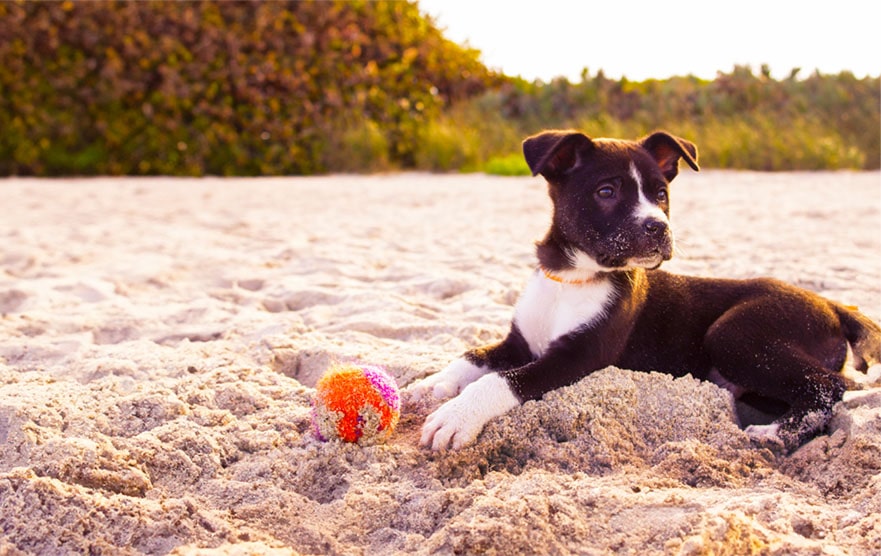5 Tips for Keeping Your Dog Engaged During Training
Feb 22nd 2024

Learn How To Keep Your Dog Motivated To Train
Training your dog is an essential aspect of pet ownership, aiming not just at obedience but at strengthening the bond between you and your furry companion. However, keeping your dog engaged during training sessions can sometimes be a challenge. Dogs, much like humans, vary in their interests and motivation levels, which means what works for one dog might not work for another. The key to successful training lies in understanding your dog's preferences and tailoring the sessions to be as engaging and rewarding as possible. Here's an expanded look at five effective strategies to keep your dog interested and motivated during training:
1. Introduce Variety in Training
Monotony is the enemy of engagement. By varying the training exercises, you introduce new challenges that keep your dog's mind stimulated. This could mean teaching new tricks, changing the training environment, or incorporating games that require mental and physical involvement. Variety not only keeps your dog interested but also enhances their overall learning by applying skills in different contexts.
2. Leverage High-Value Rewards
Identifying and utilizing what motivates your dog the most is crucial. For some dogs, a particular treat might be irresistible, while others may prefer a favorite toy or enthusiastic praise. Using these high-value rewards during training sessions can significantly increase their eagerness to participate and succeed. Be mindful of the rewards value from your dog's perspective, which can greatly enhance their focus and participation.
3. Optimize Session Length
Attention spans vary widely among dogs, and recognizing the ideal training duration for your pet can prevent disinterest or frustration. Short, focused sessions are generally more effective, ensuring that your dog remains engaged without becoming fatigued or bored. Observing your dog's behavior can help you gauge the perfect session length, maintaining their enthusiasm for learning.
4. Incorporate Play Into Training
Play is a powerful motivator for dogs. Integrating playtime into training sessions not only makes learning more enjoyable but also relieves any potential stress associated with training. It serves as a reminder that training is a positive and fun activity, reinforcing their desire to participate. Additionally, play can serve as both a reward and a break, helping to reset their focus and energy for more learning.
5. Always Conclude Positively
Ending training sessions on a positive note ensures that your dog retains enthusiasm for future sessions. Achieving any success, no matter how small, reinforces their confidence and associates training with positive experiences. This encourages eagerness to learn and reinforces the training as a rewarding and enjoyable activity.
What To Do When You See Your Dog Losing Interest
When you notice your dog's engagement in training sessions starting to wane, it's crucial to reassess your approach and implement strategies to recapture their interest. First and foremost, understand that a lack of engagement can stem from various factors such as boredom, confusion, or even overstimulation. Identifying the root cause is essential to adjusting your training methods effectively.
If boredom seems to be the issue, it's time to inject more variety and fun into your training sessions. Consider introducing new commands or tricks that challenge your dog mentally and physically. Changing the training environment can also offer new stimuli, making the session more interesting for your dog. For example, if you've been training in your backyard, try moving to a quiet park where new sights and smells can reinvigorate your dog's curiosity and attention. Additionally, integrating playtime into training or using interactive toys can turn a routine session into a stimulating game.
On the other hand, if your dog is confused or overwhelmed, simplifying your training approach can help. Break down commands into smaller, manageable steps to ensure your dog understands what is being asked of them. Reducing the complexity of tasks can prevent frustration and increase the likelihood of success, which can boost their confidence and re-engage them in the process. Moreover, paying close attention to your dog's body language can offer clues about their emotional state and help you adjust your pace and training methods accordingly. Remember, patience and positive reinforcement are key. Celebrating even minor achievements with treats or affection reinforces their good behavior and keeps them motivated to participate.
Conclusion:
By following these strategies, you'll elevate your dog training sessions into enriching experiences that both you and your pet look forward to. Integrating variety, ensuring sessions are rewarding, and incorporating elements of fun are key to maintaining your dog's interest and motivation. This not only makes learning more enjoyable for your furry friend but also deepens the bond between you, fostering mutual trust and understanding. Each training opportunity becomes a stepping stone towards enhancing your dog's skills and behavior, while simultaneously reinforcing the joy and love at the heart of your relationship. With patience and consistency, this approach transforms training from a mere routine into an engaging journey of growth for you and your dog.
Buy All Of Your Dog Training Gear from J&J Dog Supplies
For all your dog training needs, you can trust J&J Dog Supplies to provide high-quality products. From FitPAWS gear to dog treadmills, we offer a wide range of training tools to keep your dog fit and engaged year-round!





